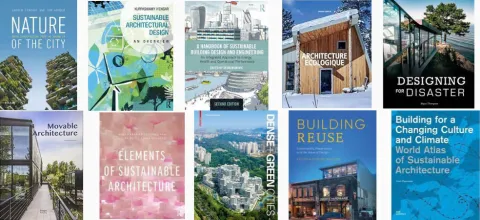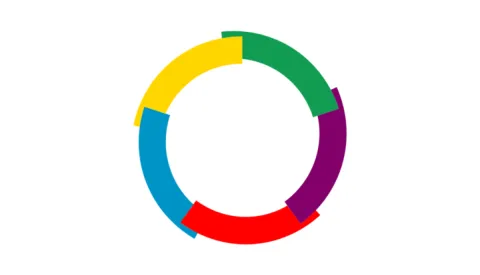Dictionaries, encyclopedias and handbooks
Academic subject specific resources offer definitions, as well as short introductions to key topics, concepts, methods and areas of study in the discipline.
Entries will often include a bibliography so you can learn about key authors in the subject area and get references to articles and books on the topic.
Explore this collection in Omni
-
Image

April 22 is Earth Day. To celebrate this annual event, the Architecture Library has created a display of books and videos on sustainable architecture and design, green architecture, passive house designs, global warming, and climate change. We invite you to explore our library exhibit, to take action and to celebrate Earth Day everyday.
Sustainable architecture and design
-
Image

March is Francophonie Month, an opportunity to celebrate and honour the French-speaking cultural heritage of Canada and beyond. Visit the Architecture Library to discover some famous French architects and their important architectural works, and celebrate French language and culture with our collection of books.
Francophonie Month
-
Image

One School, One Book is designed to create a shared reading experience within a community. The purpose is to bring our students, staff and faculty together by reading one book each winter.
One School, One Book
Books are organized by call numbers. Here is a quick video on how to read a call number. Architecture-related materials are generally classified under NA.
Relevant call number ranges include:
| Call number range | Description |
|---|---|
| E-F | History. Historic Preservation. |
| GN | Vernacular Architecture |
| HT | City Planning. Urban Design. |
| KF | Architecture and Law |
| LB | Buildings for Education |
| N | Visual Arts |
| NA 1-9428 | Architecture |
| NA 1-60 | General |
| NA 100-130 | Architecture and the state |
| NA 190-1555.5 | History |
| NA 1995 | Architecture as a profession |
| NA 2000-2320 | Study and teaching. Research |
| NA 2335-2360 | Competitions |
| NA 2400-2460 | Museums. Exhibitions |
| NA 2500-2599 | General works |
| NA 2599.5-2599.9 | Architectural criticism |
| NA 2695-2793 | Architectural drawing and design |
| NA 2835-4050 | Details and decoration |
| NA 4100-8480 | Special classes of buildings |
| NA 4100-4145 | Classed by material |
| NA 4150-4160 | Classed by form |
| NA 4170-8480 | Classed by use |
| NA 4170-7020 | Public buildings |
| NA 4590-5621 | Religious architecture |
| NA 7100-7884 | Domestic architecture. Houses. Dwellings |
| NA 7910-8125 | Clubhouses, guild houses, etc. |
| NA 8200-8260 | Farm architecture |
| NA 8300-8480 | Outbuildings, gates, fences, etc. |
| NA 9000-9428 | Aesthetics of cities. City planning and beautifying |
| NC | Drawing and Graphic Arts |
| NK | Interior Architecture and Design |
| RA | Hospital and Health Facilities Design |
| SB | Landscape Architecture |
| TH | Building and Construction |
| Z 679 | Library Design |
Architecture generally uses the Chicago style citation format.
Fire Insurance Plans
Search city insurance plans in detail to discover urban city maps that provided insurance companies with vital information. This included building composition -- in order to assess fire risk and subsequently assist in assigning insurance rates. These historical plans provide details on building construction and usage. In two dimensions, they provide colourful insight into streets, neighbourhoods, and non-residential regions.
- Fire Insurance Plans from the Architecture Library, in physical format.
- Fire Insurance Plans from Western University Libraries. Online format covers, City of: Hamilton, London, Ottawa, Toronto, as well as Canada-wide, Listings by Province, and United States
The Architecture Library maintains a small, reference collection of core architectural building materials samples. The Materials Collection introduces students to a range of materials that can be used in the design and construction of the built environment.

CSI MasterFormat Divisions
The Materials Collection is organized by the Construction Specifications Institute’s (CSI) MasterFormat to familiarize students with industry standards before entering the design profession.
CSI MasterFormat is the standard for organizing construction specifications of commercial and institutional building projects in the U.S. and Canada.
MasterFormat is a product of the Construction Specifications Institute (CSI) and Construction Specifications Canada.
The Architecture Library has print copies of M.Arch Theses that can be consulted in the library. Ask the front desk staff to view any theses.
LU|ZONE|UL provides access to M.Arch theses online.
Architecture: journals & articles
In addition to these online sources for architecture journals and articles, see our collection of Architecture print journals listed in Omni.
The Avery Index to Architectural Periodicals is published by the Avery Architectural and Fine Arts Library at Columbia University. It offers a comprehensive listing of journal articles on architecture and design, including bibliographic descriptions on subjects such as the history and practice of architecture, landscape architecture, city planning, historic preservation, and interior design and decoration. It contains over seven hundred American and international journals including not only scholarly and popular periodical literature, but also publications of professional associations, American state and regional periodicals, and the major serials on architecture and design of Europe, Asia, Latin America, and Australia. Articles are included from key publications such as American Architect, Domus, Dwell, and El Croquis, as well as architectural articles from art and planning journals such as Burlington Magazine, Journal of Green Building, Metropolitan Museum Journal, and Urban Land. Avery Index also contains references to more than thirteen thousand obituary citations thereby providing architects, architectural historians, and researchers with an excellent source of biographical and professional information about architects. Among the obituaries indexed are those from four crucial American periodicals since their inception: American Architect (1876), Architectural Forum (1892), Architectural Record (1891), and Progressive Architecture (1920). The Journal of the Royal Institute of British Architects is indexed as far back as 1865, providing an extensive record of English architects.
This database covers a broad range of related subjects from fine, decorative and commercial art, to various areas of architecture and architectural design. This database features full-text articles—as well as detailed indexing and abstracts—for an array of journals, books and more. International in scope, Art & Architecture Source includes periodicals published in French, Italian, German, Spanish and Dutch and is designed for use by a diverse audience, including art scholars, artists, designers, students and general researchers.
JSTOR includes the archives of over one thousand leading academic journals across the humanities, social sciences, and sciences, as well as select monographs and other materials valuable for academic work. The entire corpus is full-text searchable, offers search term highlighting, includes high-quality images, and is interlinked by millions of citations and references. Note: Normally the journals in JSTOR are five years from current; further, all JSTOR journals are available through the "Get it @ Laurentian" link from other databases. JSTOR should NOT be used as at the first resort.
Architecture: related databases
Contains summaries of articles in Abstracts in Anthropology since 2008, about Anthropology, related fields, Archaeology and Linguistics.
The CPI provides access to articles from a comprehensive list of Canadian and international journals, magazines, selected sections of the Globe and Mail, Canadian biographies and other reference content from Gale™, all with a Canadian focus. Indexing from 1980 to present; Full-text articles from 1983 to present.
JSTOR includes the archives of over one thousand leading academic journals across the humanities, social sciences, and sciences, as well as select monographs and other materials valuable for academic work. The entire corpus is full-text searchable, offers search term highlighting, includes high-quality images, and is interlinked by millions of citations and references. Note: Normally the journals in JSTOR are five years from current; further, all JSTOR journals are available through the "Get it @ Laurentian" link from other databases. JSTOR should NOT be used as at the first resort.
Maclean’s Magazine Archive, 1905-2015, the leading Canadian news and general interest magazine, provides a unique perspective on both national and international affairs. Topics include investigative reporting, opinion and analysis on politics, economy and business, science and technology, society, arts and culture, education and work. It was initially known as The Business Magazine, then The Busy Man’s Magazine, and changed to the current title, Maclean’s, in 1911. --Publisher's description
Covers the international literature of sociology and related disciplines in the social and behavioural sciences since 1952. Includes Applied Social Sciences Index & Abstracts (ASSIA), Sociological Abstracts (abstracts of books, book chapters, dissertations, conference papers and working papers), Sociology Database (including full-text content since 1985), and Social Services Abstracts.
Online films
Roughly 1,000 popular films available for streaming in English and French. The public performance license allows indoor non-profit movie presentations for students, staff, and faculty of Laurentian University.
The database compiles the principal credits of every Canadian feature film from 1913 to 2006, establishes a list of Canadian feature films from published information up to 2006 and features over 4,300 films.
Criterion-on-Demand represents a large number of feature film producers, including, but not limited to: Paramount Pictures, Warner Bros., 20th Century Studios, Searchlight Pictures, Elevation Pictures, Sony Pictures Classics, Alliance Films, Miramax Films, Lionsgate Films, Mongrel Media, Indican Pictures, as well as a number of independent producers. The title selection includes new releases, classics, foreign films, literary adaptations, documentaries, animated titles, and independent features.
The NFB's online Screening Room features over 3,000 films, excerpts, trailers and interactive works (including) documentaries, animation, experimental films and fiction (with a Canadian context or perspective.)
